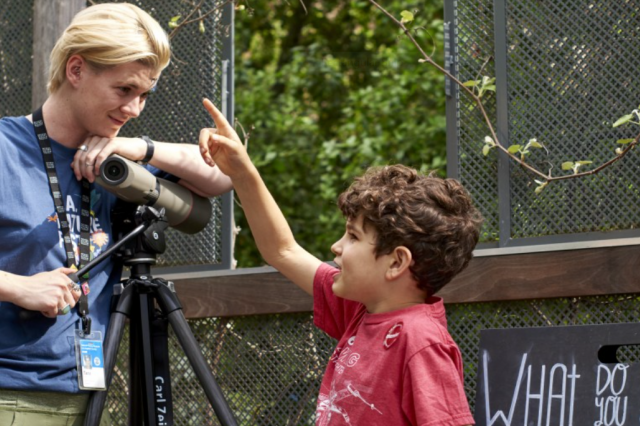
Teacher Guide | All Grades
Make efficient use of space with square foot gardening and optimize growing conditions with companion planting.
In partnership with Descanso Gardens
In this three-part lesson, students will collaborate to plan and plant a garden. Students will learn to plan out a garden by dividing it into a grid and planting seeds according to variety. Each square foot of the grid will contain a specified number of seeds of one kind, based on how that plant grows. The squares will then be arranged so that companion plants, plants that grow well together, border one another.
Students will begin to identify plants' needs, including space and relationships.
Students will participate in collaborative conversations.
Part 1: Planning Your Garden
Before you begin planning your garden, take time to discuss with your students the purpose of planting a garden. Possible discussion points (depending on grade levels) are:
Next, lead a discussion on caring for plants by asking what they need to grow (soil/nutrients, sun, water, air, and space). Use a movement activity to demonstrate that seeds and plants need space to grow. Have the class sit closely together, then invite them to imagine that they are each a tiny seed of their favorite vegetable. “Add” all of the components the students identified as necessary for healthy growth. As you add these components (e.g. You're placed in healthy soil; The sun is coming out; Clouds are forming and it’s starting to rain), students will “grow” as a plant would. Direct them to stretch out their legs like roots, raise their arms like the first sprout, stand up as a stem would grow, then stretch out and wave their arms like leaves, etc.
Ask students:
Explain that plants need room to grow, and that different plants require different amounts of space. You can also lead a conversation about the various ways that plants grow: some grow up or climb, some vine, some grow down (root veggies), and some spread out and up (cabbage, broccoli, etc.).
Discussion questions:
Have students work with partners. Each pair will pick a vegetable they want to plant in the garden, choosing from the Garden Planning Cards. These cards will tell students how much space each plant needs in a 12” x 12” square. Have partners divide a 12” square piece of paper into appropriate smaller squares (either by folding or measuring). In the middle of each small square students should draw their vegetable. Make one together as an example:
Part 2: Companion Planting
Plants can act as companions to each other. Discuss the meaning of companion and create a definition together. Think of what friends do for each other; how could plants do this for each other? Ask students to use their Garden Planning Cards to discover what their plant's companions are. Then have each pair find another pair with a companion to their plant. Once students find their companions, invite them to lay out their paper squares on the ground to form a garden bed outline (typically 4’ x 8’, 3’ x 8’, or 4’ x 4’). Make sure companion plants are next to each other. This will require collaboration among the class as a whole. Once the paper squares are in place, tape them together to form a square foot garden map.
Part 3: Creating Your Garden
Using garden journals or graph paper to record data, students will work in groups to:
For Younger Students (Grades K-2)
Add songs and books about seeds, plants, and gardens. Prior to the activity, select bigger seeds for little hands (e.g. peas, beans, squash, nasturtiums) or the pelleted form of small seeds (e.g. carrots, lettuce, basil). Adapt the lesson by having the 12” x 12” paper already in a grid according to the chosen plant (i.e. a grid with 4, 9 or 16 blank squares). Have students draw the plant they’ve chosen in each square; plants could be represented by shapes or colors (e.g. triangles for carrots or red squares for radishes) if it’s useful. Pre-cut the twine and create the grid with stakes ahead of time. Instead of shovels, encourage students to use their fingers to make holes for the seeds.
For Older Participants (Grades 7 and up)
Expanding the project:
Companion Planting
Plants can be companions to each other in a variety of ways:
Above ground
Below ground
Square Foot Gardening
This method of dividing your garden into a planting grid:
NGSS
K-LS1-1 , 1-LS1 , 2-LS2, 3-LS2, 4-LS1-2, 5-LS1-1, MS-ETS1, HS-LS2
Mathematics
K.MD.A.1, 1.MD.A.2, MP.2, 3.MD.B.4, 4.MD.A.1, 5.MD.A.1
ELA
WHST.6-8.7